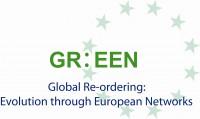A Deputy, A Dose of Reorganization and a Schuman Shuffle: How to Make the European External Action Service Work Better

Creating an effective, functioning European External Action Service (EEAS) was never going to be simple. The EEAS has offered a seemingly easy target for eurosceptics and journalists who have been quick to point the finger of blame at Catherine Ashton for all of the new institution’s woes. Yet, away from the glare of publicity Ashton’s EEAS has been chalking up some quiet successes. Nonetheless, as the EEAS prepares to review progress in the coming months, attention should be focused on streamlining the decision-making processes, ensuring better co-ordination with other EU institutions, and implementing new measures to provide incentives and rewards for national diplomats to work in the EEAS and those in the EEAS to work in their national ministries, what I call the “Schuman Shuffle”.
The EEAS has only been a functioning entity for just over two years. Too soon in the eyes of some to embark on reviews, but there was a clear logic to setting that date: to have all of the recommended changes in place by the time the next Commission – and hence the next High Representative/Vice President (HR/VP) - comes into office.
The EEAS’s strengths and weaknesses stem in large part from the fact that it offers a picture of the EU in microcosm. At the heart of EEAS is an attempt to capitalize on the pooling of sovereignty and the benefits of coordination, whilst recognizing the national interests of individual member states and the need to work closely with other institutions. The EEAS – and the EU as a whole – is never going to work perfectly, but even a few small changes at this stage could make a major difference.



